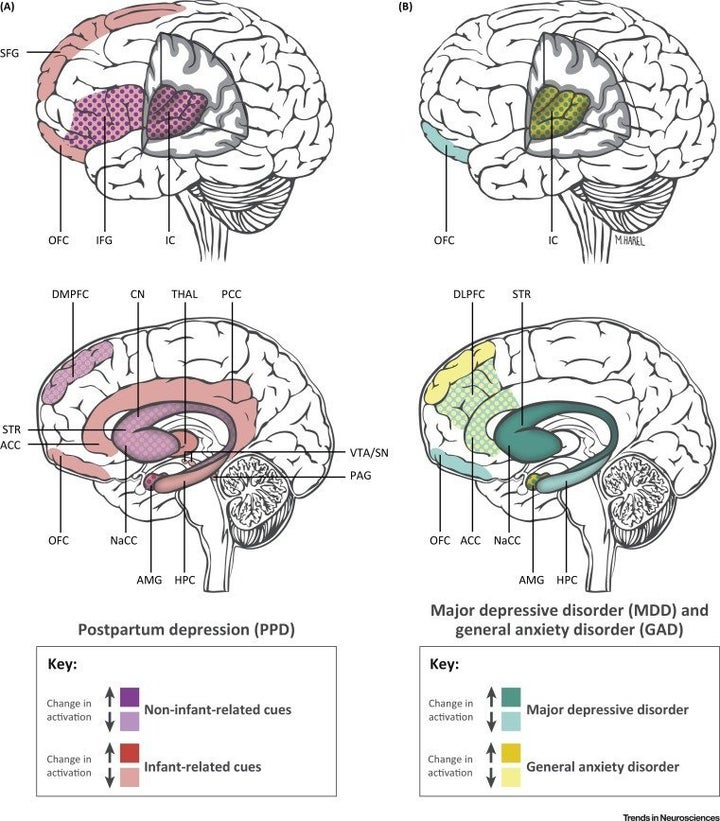
As many as 1 in 5 new mothers will suffer from severe depression or anxiety after giving birth, and a woman is significantly more likely to suffer from one of these conditions during her first year as a mother than at any other time in her life.
And yet, perinatal mood disorders are still woefully under-recognized ― post-partum anxiety, for instance, isn’t even listed in the American Psychiatric Association’s Diagnostic and Statistical Manual ― and also under-researched.
“This is a big deal: 10 to 20 percent of our moms are mentally ill, but we know virtually nothing about how these mental illnesses change the maternal brain,” Dr. Jodi Pawluski, a behavioral neuroscientist at the University of Rennes in France, told The Huffington Post. “Ten to 20 percent of our kids have moms that are mentally ill. ... This affects us all.”
Post-partum mental health problems may appear similar to depression and anxiety in its usual forms, but what we know so far suggests that they are very distinct. A study published this week in the journal Trends in Neuroscience shows that postpartum mood disorders involve fundamentally different brain activity from those not occurring in new mothers.
“Motherhood really can change the mother, which is something we often overlook,” Pawluski added in a statement. “And we forget about examining the neurobiology of maternal mental health and maternal mental illness, particularly anxiety.”
For their study, Pawluski and her colleagues analyzed brain scans of mothers with post-partum depression and anxiety, comparing them with brain scans of individuals with major depressive disorder. The analysis revealed that mood disorders occurring after birth involved very different patterns of activity from depression and anxiety in people who did not recently give birth.
The main difference they observed was in the amygdala, the brain’s center for fear and threat response. People with generalized anxiety and depression showed a hyper-active amygdala in response to emotional cues, while new mothers showed a decreased amygdala response to emotional cues (except those related to their infant).
To visualize how different areas of the brain are activated by depression and anxiety in new mothers compared to non-mothers, check out the diagram below:

These findings suggest that post-partum mood disorders are fundamentally different from those occurring at other times of life.
“Postpartum depression is likely not simply an extension of major depressive disorder, as traditional diagnostic classification implies,” the study’s authors concluded.
Pawluski hopes that their findings will eventually lead to tailored diagnoses and treatment options.
“The more we know about the neurobiology and neurophysiology of these perinatal mental illnesses, the better able we will be able to treat them,” said Pawluski, who is also a mother of two.
With greater awareness and understanding, rolling back the stigma of post-partum depression becomes possible and many new mothers will be able to speak openly and seek treatment sooner.
“I was fortunate and I have, overall, loved being a parent,” Pawluski said. “I want all moms to experience that, and I want there to be ways we can make that possible.”
